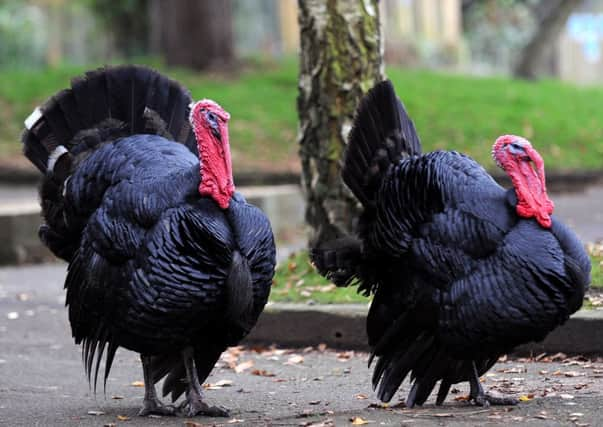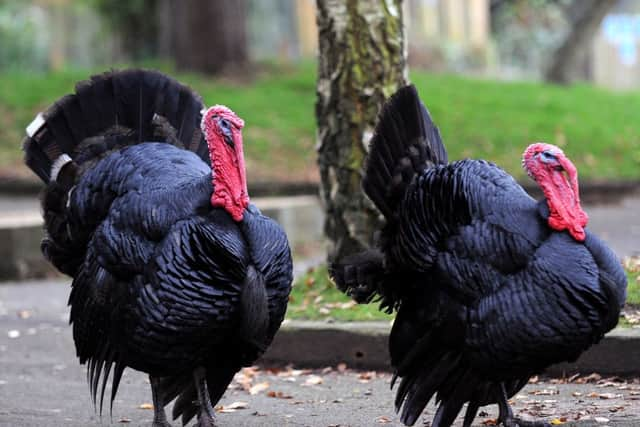Video: Gobbling up facts about Tilgate turkeys


With Christmas just three weeks away, we explore the noisy world of an animal strongly associated with the festive season – the turkey.
Turkey
(Meleagris gallopavo)


From North America
Fossils show that turkeys have existed for more than 23 million years, although they would’ve been very different to modern day turkeys.
Advertisement
Hide AdAdvertisement
Hide AdDomesticated birds are descended from wild turkeys which inhabit the forests of North America. Turkeys were introduced to Britain in the early 1500s and farmers have been breeding them ever since.
Wild turkeys rarely weigh more than 10kg and are fantastic fliers spending their nights in the tall trees safely away from predators. Domesticated turkeys are bred for their meat often tipping the scales at more than 20 kilograms and struggle to get more than a few feet off the ground.
Toms and hens
Male turkeys are known by a range of names including toms, gobblers and stags.
They’re usually bigger and more colourful than female birds and will ‘display’ by proudly puffing up their feathers in the hope of attracting a mate. The red skin around their heads, know as a snood, will get brighter during their display.
Advertisement
Hide AdAdvertisement
Hide AdThe females, known as hens, are smaller and duller which helps to camouflage them while they sit on their eggs.
Young chicks are able to run around and feed themselves as soon as they hatch but need their mother for warmth and protection; they grow quickly and are able to fly at just ten days old.
Christmas story
Many families this December will be sitting down to a roast dinner of turkey and all the trimmings. Turkey at Christmas has been mentioned since they arrived in Britain and was even featured in Charles Dickens’ A Christmas Carol.
Why has this bird become synonymous with Christmas celebrations?
Advertisement
Hide AdAdvertisement
Hide AdHere are some possible reasons: Their natural life cycle means they reach maturity in December; their large size makes them suitable for a big family dinner; due to their high cost they were originally seen as a ‘special treat’ and even a status symbol.
When their price dropped in the 1950s their popularity grew and grew.
Dividing opinion
We have three Norfolk black turkeys which are a traditional English breed.
They’re very vocal birds so you’re very likely to hear their famous ‘gobble gobble’ call.
Advertisement
Hide AdAdvertisement
Hide AdOur turkeys seem to divide the opinion of visitors with some really liking them and some actively avoiding them!
Come along to see us or visit www.tilgatenaturecentre.co.uk to find out more about Tilgate Nature Centre and its residents.